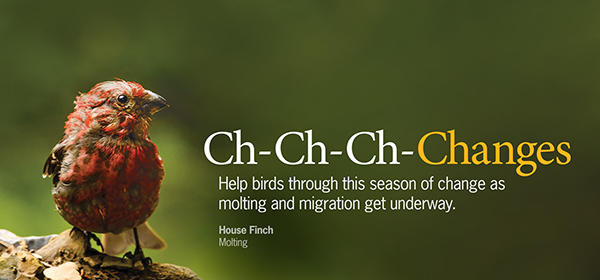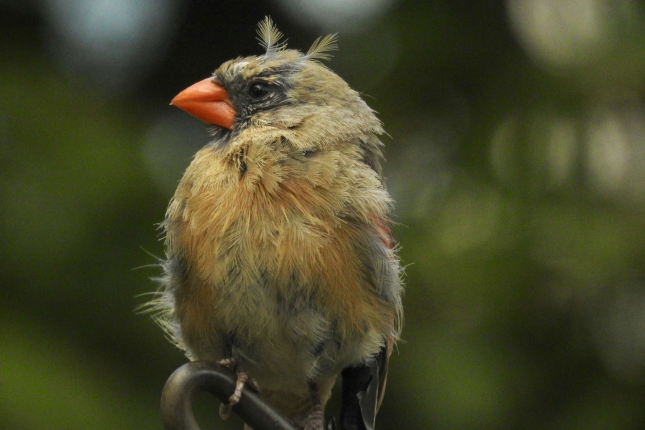
Being Seasonally Savvy: Things To Learn & Do During Molting Season
Just as people make seasonal wardrobe changes, many birds are beginning a transformation of their own by replacing their old and worn feathers in a process known as molting.
Molting is when a bird replaces some of (partial molt) or all of (full molt) its feathers. This is a complicated process that requires a lot of energy; and as result the timing of when a bird molts is very strategically important so that it doesn't conflict with other high-energy tasks.
The timing of when a bird will molt varies widely by species and location. Not all birds will molt the same amount of times per year, with some only doing one full molt and others undergoing a partial and full molt. We can usually safely estimate though that most songbirds in North America will molt after peak nesting season but before migration (July-August), and then again at some point in late winter to spring.
Distinguishing birds that are molting from those that are not is sometimes difficult, different stages of a molt can make a bird just look a bit scrungly and unkempt rather than going through the big change that it is! Some birds are much more obvious about their molting, and you may see them missing entire sections of feathers or looking like they're balding.


Since feathers are made of more than 90% protein (primarily keratins), every molting bird needs extra protein and calcium to grow strong feathers for proper flight and effective insulation. You can help ensure that your birds have a reliable source of protein, calcium, and fats to help them with molting by offering nutritious and/or specially formulated foods in your feeders.
We have everything you need to help your birds keep going (and re-growing feathers) during this critical time. Our Nesting Super Blend is packed full of mealworms for protein, Bark Butter Bits for calcium, and peanuts for healthy fats.
Did You Know?
Molting is so physically demanding for most ducks and geese that they can't fly and will choose to molt in safe, secluded places to avoid predators during this especially vulnerable time!
Peak Molting Times Chart
↑The above matrix is a timeline of when some common North American bird species are at their peak molting period.
*The actual duration of molt and timing of molting varies between birds and regions. As a rule of thumb, it generally
takes about 4 weeks for songbirds to fully molt their feathers. However, in some cases, it may take up to eight
weeks.
Generally more Southerly birds molt a bit sooner in a season than their more Northerly counterparts.
Summer/Fall molts are usually complete molts (head, body, flight, and tail feathers). Whereas, Spring molts are partial
molts (head and body) and are done only by a few bird species.
Additionally, Goldfinches perform a complete molt somewhere between July and December depending on the species and their
geographic region. American Goldfinches and Lesser Goldfinches (in the Central USA) also perform a partial molt
(head and body) in the Spring.

